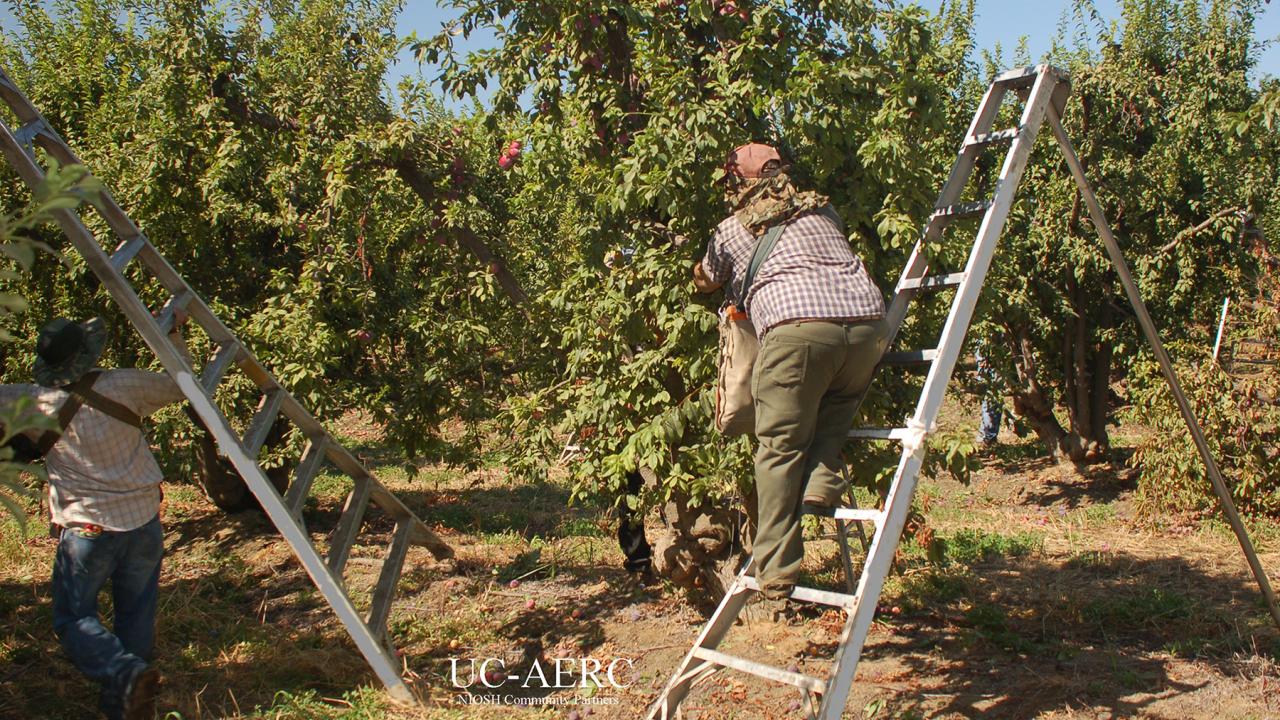
Small Changes Can Make Big Impact with Ladders
If you ever had an ergonomic review of your workspace, you know that small changes, such as moving your chair up an inch or tilting your monitor a few degrees, can make a big difference in reducing muscle aches and pains.
The same is true in agriculture where repetitive movement (e.g., going up and down ladders) can become incredibly tiring, potentially leaving a worker open to various types of injury. Staying healthy and strong is especially important for farmworkers who look forward to harvesting multiple crops through the season.
Professor Fadi Fathallah, engineer Victor Duraj, and others at the UC Agricultural Ergonomics Research Center (UC AERC) are continuing their earlier work funded by NIOSH Community Partners for Healthy Farming Intervention that showed some workers who harvest peaches and nectarines prefer a ladder with shorter spacing between steps.
Why might this be? It may go back to the principle of switchbacks. If you’ve ever hiked, you know that it is a lot easier to go up the hill via switchbacks than blazing a trail straight up. You have to take more steps with switchbacks but the vertical height of each step is much less, and, ultimately can be less tiring. You might also find that even though you took longer to get there, by the end of the day you may have walked further or the next day be less tired, or both. The same may be true when climbing a ladder if it has shorter steps.
In current work supported by the Western Center for Agricultural Health and Safety, the UC AERC is using human muscle force modeling software to see why some workers with relatively small differences in size might have a strong preference for a particular spacing. To help match forces with movements the researchers are using motion capture equipment that includes small sensors strapped to many points on a body. These electronics are similar to those used in developing animated movie and video game characters that move in “real” ways. Besides actual and modified orchard ladders, the UC AERC will use their newly developed portable research ladder that allows for precise positioning of each ladder rung as well as overall angle of the ladder, which will help the researchers test software-predicted optimum spacing for each person in the study.
If you are curious to know more or are a grower interested in participating in field trials, please contact Victor Duraj at 530-752-1898, vduraj@ucdavis.edu, or via ag-ergo.ucdavis.edu.
